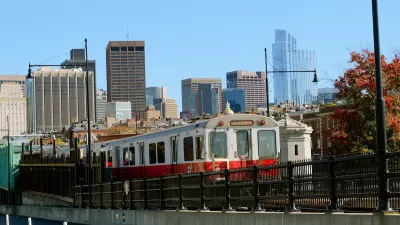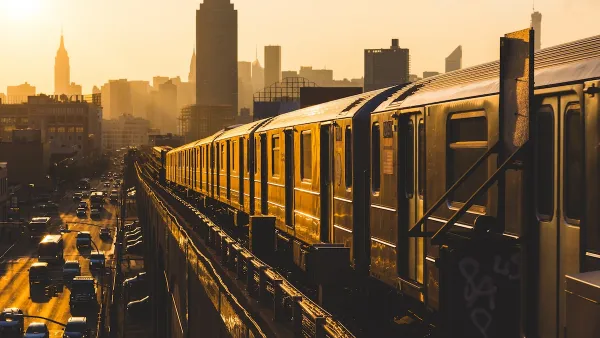Prevailing wisdom is that transit mode and frequency of service is dependent on residential density, which leaves low density, outer suburbs in a lurch, instilling an auto-dependent lifestyle. Not so, says Australian researcher and author Paul Mees.
"Residents in the outer suburbs should not have to wait for higher housing densities before getting better public transport, according to research that could defuse one of the most bitter controversies in urban planning."
Writing in the journal Australian Planner, Dr. John Stone, of the University of Melbourne, and Dr. Paul Mees, of Royal Melbourne Institute of Technology University present an alternative to what many view as Smart Growth 101: The key to better transit is to increase density and mixed uses.
"The keys to increasing public transport use in outer suburbs are more frequent buses, running at least every 10-15 minutes, and not just in peak hour; better co-ordination with rail services; more convenient transfers; and fares that allow free transfers between modes."
''Alternatives to the car will need to be effective at existing urban residential densities''.
Thanks to Allen Tacy
FULL STORY: Transport study derails thinking on outer suburbs

Maui's Vacation Rental Debate Turns Ugly
Verbal attacks, misinformation campaigns and fistfights plague a high-stakes debate to convert thousands of vacation rentals into long-term housing.

Planetizen Federal Action Tracker
A weekly monitor of how Trump’s orders and actions are impacting planners and planning in America.

In Urban Planning, AI Prompting Could be the New Design Thinking
Creativity has long been key to great urban design. What if we see AI as our new creative partner?

King County Supportive Housing Program Offers Hope for Unhoused Residents
The county is taking a ‘Housing First’ approach that prioritizes getting people into housing, then offering wraparound supportive services.

Researchers Use AI to Get Clearer Picture of US Housing
Analysts are using artificial intelligence to supercharge their research by allowing them to comb through data faster. Though these AI tools can be error prone, they save time and housing researchers are optimistic about the future.

Making Shared Micromobility More Inclusive
Cities and shared mobility system operators can do more to include people with disabilities in planning and operations, per a new report.
Urban Design for Planners 1: Software Tools
This six-course series explores essential urban design concepts using open source software and equips planners with the tools they need to participate fully in the urban design process.
Planning for Universal Design
Learn the tools for implementing Universal Design in planning regulations.
planning NEXT
Appalachian Highlands Housing Partners
Mpact (founded as Rail~Volution)
City of Camden Redevelopment Agency
City of Astoria
City of Portland
City of Laramie





























